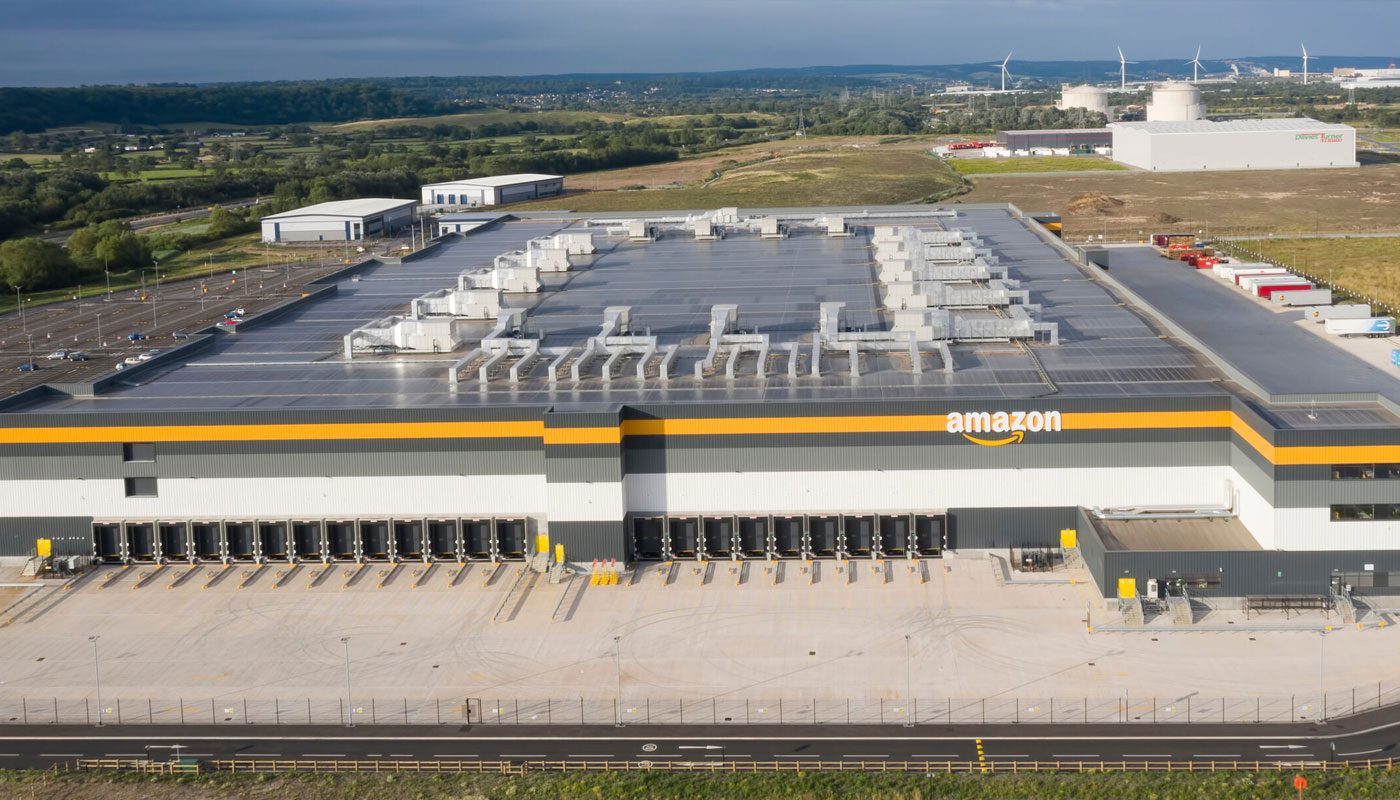Have you heard of Supply Chain by Amazon? The company is following up Fulfillment by Amazon (FBA), its in-house fulfillment business, with a logistics offering that is even more ambitious in scale.
In a September 2023 announcement, Amazon rolled out Supply Chain by Amazon, a logistics business that includes cross-border transit, customs, and long-term storage.
All told: Thanks to Supply Chain by Amazon, Amazon’s supply chain footprint seems certain to get much, much bigger.
What is Supply Chain by Amazon?
Supply Chain by Amazon is a set of end-to-end automated supply chain solutions for brands of all sizes.
Amazon takes the inventory from your global manufacturing facilities, ships it to long-term warehouses, and then—if you want—delivers it to the front door of your customers.
Supply Chain inventory will handle:
- Pick up from the manufacturer
- Cross-border shipping, including customs clearance
- Transit to FBA warehouses
- Product replenishment
Now, if you work with out-of-country manufacturers, you don’t have to worry about cross-border transit.
Essentially, Supply Chain by Amazon covers all of the parts of the supply chain process that happen before fulfillment—the ocean shipment, customs, long-term storage, and more.
How is Supply Chain by Amazon different from FBA?
Normally, when you opt for Fulfillment by Amazon (FBA), you still have to coordinate with your manufacturers to get your products over to Amazon’s warehouses in the first place. From there, Amazon handles the shipping to your customer’s door.
Essentially: You handle the first leg of the logistics journey, and Amazon handles the second.
By contrast, Supply Chain by Amazon means that Amazon will handle both legs of that journey.
How long has the program been around?
While Supply Chain by Amazon was only formally announced in September 2023, it has had a number of important precursors.
For instance, Amazon has been quietly offering logistics as a service for its sellers for years. It registered to be an ocean freight carrier in 2015, then slowly began offering to carry ocean freight for select brands. Initially, Amazon mostly focused on Chinese sellers.
In 2021, when the backlogged supply chain had reached its peak, Amazon was even chartering ships and leasing planes in a bid to move products in and out of global ports faster.
Amazon also has an entire cargo plane apparatus called Amazon Air. Right now, Amazon Air planes conduct around 205 flights per day, according to a recent analysis by DePaul University.
What ocean freight services does Supply Chain by Amazon cover?
Amazon’s ocean freight service offers sellers all of the major shipping options. You can store your inventory in a:
- Full container: If you have the means, and a large amount of inventory to ship, Amazon can bundle your products altogether into a singler container.
- Less-than-container load (LCL): This is a type of ocean freight that is growing in popularity in the business, especially among smaller brands. Basically, LCL lets you split a container with other brands, so that you can save a bit of money.
What are Amazon’s warehouse offerings?
With the introduction of Supply Chain by Amazon, Amazon is now offering two distinct types of warehouse space to its clients:
Amazon Warehousing Distribution (AWD). AWD warehouses are specifically tailored to long-term storage. This is now a core node in Amazon’s end-to-end supply chain business. When Amazon receives a product from a manufacturer, it will store that product for the long haul.
Fulfillment centers. By contrast, Amazon’s fulfillment centers are designed to be short term. You ship a product to a fulfillment center with the expectation that it will be quickly sold and dispatched to your customers.
How much does Supply Chain by Amazon cost?
Like Fulfillment by Amazon (FBA), the costs associated with Supply Chain by Amazon vary significantly depending on the size, weight, and dimensions of the product.
But Amazon promises that its supply chain services will save sellers 25% on logistics costs.
What about my non-Amazon sales channels?
The prospect of Amazon becoming so deeply ingrained in your logistics, including at the manufacturer level, can raise an obvious question. What about your other, non-Amazon channels, like Walmart and Shopify?
Amazon does offer a workaround here: in its new Multi-Channel Distribution program, Amazon will deliver your products to customers who buy on multiple channels, even off-Amazon channels. Amazon can fulfill a Shopify purchase, for example, through Multi-Channel Distribution.
Even so, brands that are considering Supply Chain by Amazon should seriously contemplate what will happen to their non-Amazon channels.
Walmart, for example, doesn’t allow you to ship products sold on its site through FBA. So if you do opt for Supply Chain by Amazon, you have to be careful about not violating any rules about fulfillment.
Can you use Supply Chain by Amazon without using FBA?
The answer is yes. Brands that don’t sell on Amazon at all are free to use Amazon’s logistics network. A brand can use Amazon to pick up its products from a manufacturer, store it in long-term warehouses, and then supply those products to a physical retail store.
That’s the most impressive part: The end destination doesn’t even have to be an Amazon customer.
Amazon, however, does offer discounts on FBA in order to encourage sellers to use both SCA and FBA. If you let Amazon cover your entire logistics infrastructure, from end to end, you can save 51% on the cost of logistics during the regular season and 82% during the holidays.
How do I tell Amazon when to order more products?
Usually, FBA inventory management has been solely the concern of you, the seller. Amazon will tell you when your stock is running low, but it’s up to you to replenish it on time.
As a part of Supply Chain by Amazon, that will no longer hold true. Amazon is offering machine learning capabilities that will replenish your inventory in its warehouses automatically, based on the frequency that its algorithm determines is optimal.
For sellers, relying on Amazon’s machine-learning algorithms to resupply your products means a big loss of control. On the flip side, it should also, in theory, help you avoid products running out of stock because of shipping snafus or a failure to re-order your inventory in time.
(Want more content like this? Be sure to subscribe to our newsletter.)








